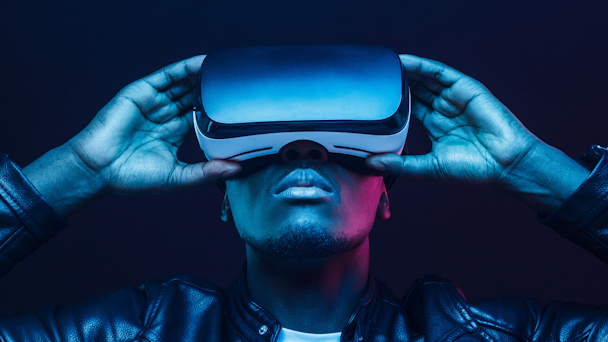Virtual reality is, finally, the new reality
Most brands and marketers look at gaming as a place for a short-term public relations spike or as a new touchpoint to connect with ‘gamers’ as an audience. The truth is that gaming is a virtual reality (headgear optional) that’s an entirely new reality – and brands who underestimate its power are missing one of the biggest opportunities out there.

Marketers can tap into the communities built around gaming
The basis of this new reality lies in the foundations of gaming as a society, not just an audience.
Gaming is changing everything as it becomes further embedded in mainstream culture. With more than 2.8 billion gamers globally and 44% of those gamers spending 7+ hours a week gaming, there’s no denying this has transcended group status. It’s a massive, borderless society that’s rapidly growing – a society that must be understood to be served and for brands to see long-term value from joining in.
Every society has its foundational structure and gaming is no different. Agencies and marketers alike need to understand the four critical elements and how they come together to form this new reality:
1) Community is as much what you believe in as what you don’t
In gaming there’s consoles v consoles, hardware v hardware, games v games and PC v everyone – plus many more match-ups. But at its heart, gaming offers a sense of community to all who partake. It’s the new frontier of experiential.
Most games are built in a community way, whether it’s while playing, through leaderboards, ways to receive help or on gaming-related platforms like Twitch and Discord. And it’s a strong community, one that will take everyone in – that is, everyone but self-indulgent marketing. Knowing the community and feeding into it and from it is crucial. A great example of working within the community comes in the form of Play NZ from TBWA\Sydney – New Zealand’s use of streaming influencers to broadcast ‘walkthroughs’ of NZ as a game, which taps into a core community and its behaviors.
2) Shared beliefs and actions make up the culture of a community
Much of this comes from where the communities live – but a lot of it is based on how they interact.
An important aspect is the pseudonymous nature of gaming. Not to be confused with anonymous, the pseudonymous society of gamers build their reputation tied to their username. This username is tied to their public stats that tiers respect across platforms and communities, while also giving them credibility to be a vocal member of the community.
These community members drive its culture: the memes, the moderation of fan-led communities, the competition, the sharing. These pseudonyms give community members the ability to redefine themselves and then help shape the experience for others, with many making friendships with people they’ll never know the names or faces of.
Peeking in is not enough – you must be fully submerged in the culture to create for it.
3) This new reality, like our mainstream reality, is built around a complex economy
Of course, there’s the economy fostered by buying a game, hardware and accessories, but the day-to-day economy is much more than that.
Eight percent of gamers have paid for in-game assets. That could be for lives, skins or tools. Anything that improves their experience commonly equates to microtransactions. But it’s more than just ‘getting ahead’, it’s about expressing themselves through how they virtually show up and creating the journey they want to experience. Roblox is a great example of the latter, showing how gamers will pay others for access to worlds they’ve created on the platform – making Roblox the environment provider but its users the ‘mayors’, so to speak.
A thriving economy is crucial to any society – and we must be across it to drive value to gamers while also seeking the opportunity of making our brands’ actions semi-funded by users.
4) With community, culture and economy covered, the remaining aspect of the new reality is purpose
It’s the most important one and the simplest to explain. The purpose of this society is to have a better life, if only for a moment. This can be applied to escapism, integrations, usage across functionality or even ‘gaming’ as it applies to other categories such as health or education.
If what you’re doing doesn’t make a gamer’s life better, then don’t bother.
While the reality created by gaming may be virtual, it’s a reality nonetheless. If you’re looking to enter it with a long-term plan to drive impact for your brand, it’s imperative you take the time to understand the foundational structures of this new reality.
Otherwise, gamers are vocal, and they’ll let you know if what you’re bringing to the table doesn’t ladder up to the ‘make life better’ purpose of gaming.
Tessa Conrad is head of Innovation at TBWA\Asia.
